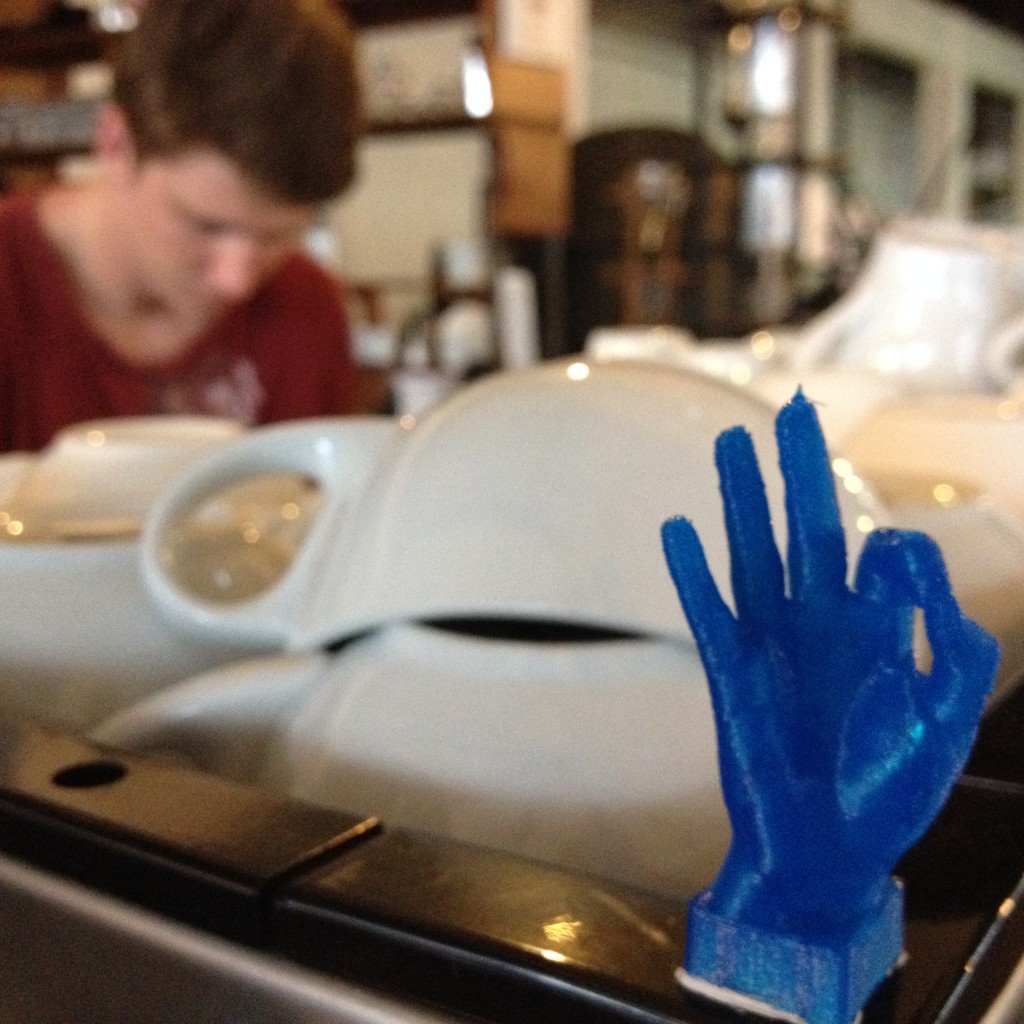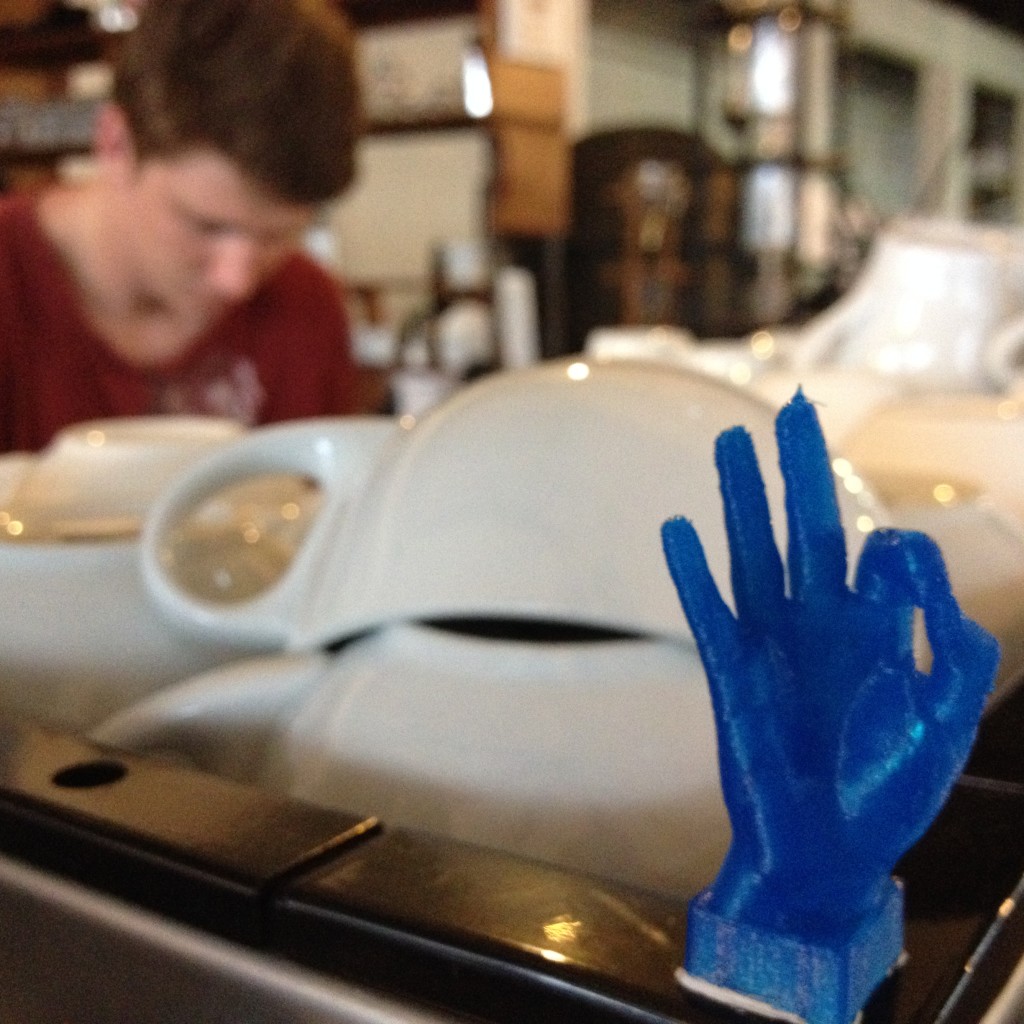
Quick Guide:
- Download a 3D file from thingiverse.com
- Download Cura slicing software
- Open Cura and set your printer (we have the following printers at the Makerspace: Prusa i3, Makerbot Dual, Printrbot)
- Set your temperatures according to the plastic you plan to use (PLA: Nozzle 210°C, Bed 50°C; ABS: Nozzle 240°C, Bed 90°C)
- Set the nozzle size according to your print objective (we use 0.4mm and 0.8mm)
- Set your layer height (0.1mm high res, 0.35 low res)
- look at the estimated print time, and see if you want to change the scale or print speed accordingly.

So you want to learn about 3D printing? Cool! 3D printing is an additive manufacturing process that creates a physical product out of a digital model. We use FDM printers because they are cheaper and more accessible. The process:
- The easiest way to get printing is to download a model from thingiverse.com, youmagine or grabcad you can even customise some items on the website.
- You will need to save an STL file, Import it into a slicing program like Cura (easy), Makerware (makerbot only), repetier host (intermediate) or Slic3r (advanced). Customise the settings for your print (temperatures, material types, speeds etc)
- Export the “gcode” file which the 3D printer you are using understands.
- Print: (you can use a service like 3Dhubs if you don’t have your own 3D printer, you won’t need to slice the model)
Take it to the next level:
Create your own part.
- You will need to draw/design a 3D model in modelling software. We use opensource/free software like tinkercad, Sketchup (and SDL Plugins), 123D design, 123D catch (on your smartphone), Blender. If you are a digital pro, then you already know how to use something expensive and powerful like cinema 4D, maya, Solidworks, Inventor, ProE, catia etc.
- Once you’ve made the part, save the model into an STL or OBJ file type.
- (optional step) Then you should check your STL file before going further to save yourself hours of frustration. Use a free service like Netfabb or willit3Dprint.
- wait (3D printing takes a long time – the printer builds the model literally 0.1mm at a time)
- Enjoy your creation!
- Repeat.
3D printing materials: FDM 3D printers melt a plastic filament usually made of ABS or PLA and squeeze the molten plastic through a thin nozzle (0.2-0.5mm). The print head moves around squeezing out the plastic like a toothpaste tubeThink about which Plastic you want to use. more background reading: wikipedia on 3D printing 3D printing: whats all the fuss about REPRAP detailed beginners guide to 3D printing
[fblike style=”button_count” showfaces=”false” width=”450″ verb=”like” font=”arial”]
[fbshare type=”button”]
[twitter style=”horizontal” hashtag=”#makerspace”]

Comments